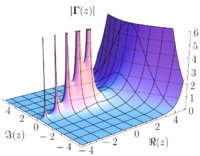
Photo from wikipedia
Solving the problem of energy consumption reducing in the industry is an urgent task. In turn, to reduce the use of fuel, it is necessary to increase the operation efficiency… Click to show full abstract
Solving the problem of energy consumption reducing in the industry is an urgent task. In turn, to reduce the use of fuel, it is necessary to increase the operation efficiency of areas that consume heat and electricity, which can only be achieved through their maximum coordinated work. Purpose. To investigate tensor analysis methods in automation systems for controlling the heat and power complex. Methodology. Methods of comparative analysis, mathematic simulation are used; experimental studies are conducted. findings. In the modern automation systems, the formation of a control action uses predicted values obtained from mathemat ical models and, therefore, the efficiency of the enterprise will depend on the adequacy of the developed mathematical model. If the mathematical model is formulated in a tensor form, then it will describe the process in an adequate way. The paper presents an example of developing a tensor model for the heat and power complex of an enterprise and its use on the example of a block dia gram of a control system. originality. Substantiation of using tensor analysis methods in the heat and power complex control system consisting of the steam source and consumers is given. This approach allowed us to quickly (by measured data) identify the state of the technologi cal process and to calculate its tensor model, which was later used for the formation of control action. Practical value. The results of the work allow us to improve conventional automation systems by adding mechanisms, which enable us to simulate a technological process in a control system using a tensor analysis method and generate a control signal.
Journal Title: Naukovyi Visnyk Natsionalnoho Hirnychoho Universytetu
Year Published: 2019
Link to full text (if available)
Share on Social Media: Sign Up to like & get
recommendations!